“Today’s events are designed for recognition, celebration, and appreciation of the numerous contributors to Fordham’s research accomplishments in the past two years,” said George Hong, Ph.D., chief research officer and associate vice president for academic affairs.
Hong said that Fordham has received about $16 million in faculty grants over the past nine months, which is an increase of 50.3% compared to the same period last year.
“As a research university, Fordham is committed to excellence in the creation of knowledge and is in constant pursuit of new lines of inquiry,” said Joseph McShane, S.J., president of Fordham, said during the virtual celebration. “Our faculty continue to distinguish themselves in this area. Today, today we highlight the truly extraordinary breadth and depth of their work.”
Earning Honors
Ten faculty members, representing two years of winners due to cancellations last year from the COVID-19 pandemic, were recognized with distinguished research awards.
“The distinguished research awards provide us with an opportunity to shine a spotlight on some of our most prolific colleagues, give visibility to the research achievements, and inspire others to follow in their footsteps,” Provost Dennis Jacobs said.
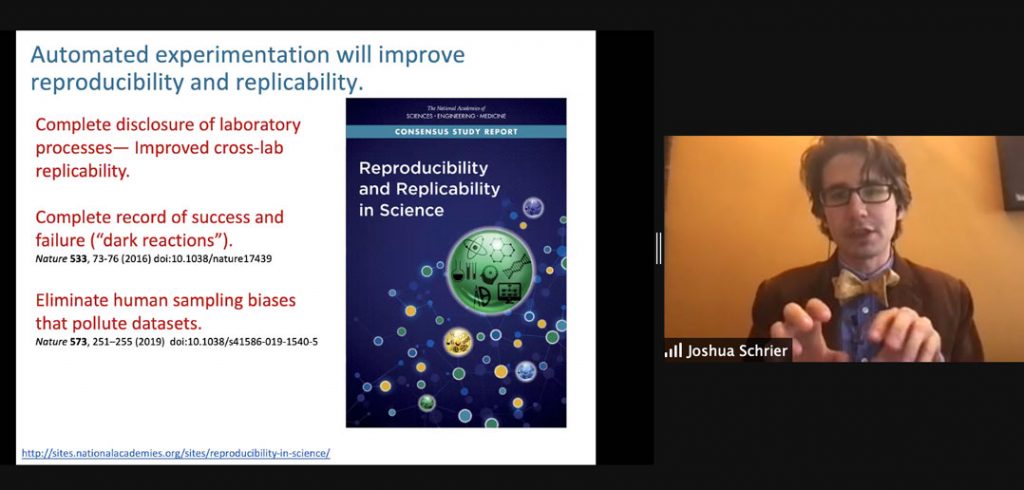
Recipients included Yuko Miki, associate professor of history and associate director of Latin American and Latinx Studies (LALSI), whose work focuses on Black and indigenous people in Brazil and the wider Atlantic world in the 19th century; David Budescu, Ph.D., Anne Anastasi Professor of Psychometrics and Quantitative Psychology, whose work has been on quantifying, judging, and communicating uncertainty; and, in the junior faculty category, Santiago Mejia, Ph.D., assistant professor of law and ethics in the Gabelli School of Business, whose work examines shareholder primacy and Socratic ignorance and its implications to applied ethics. (See below for a full list of recipients).
Diving Deeper
Eleven other faculty members presented in their recently published work in the humanities, social sciences, and interdisciplinary studies.
Jews and New York: ‘Virtually Identical’
Images of Jewish people and New York are inextricably tied together, according to Daniel Soyer, Ph.D., professor of history and co-author of Jewish New York: The Remarkable Story of a City and a People (NYU Press, 2017).
“The popular imagination associated Jews with New York—food names like deli and bagels … attitudes and manner, like speed, brusqueness, irony, and sarcasm; with certain industries—the garment industry, banking, or entertainment,” he said. “
Soyer quoted comedian Lenny Bruce, who joked, “the Jewish and New York essences are virtually identical, right?”
Soyer’s book examines the history of Jewish people in New York and their relationship to the city from 1654 to the current day. Other presentations included S. Elizabeth Penry, Ph.D., associate professor of history, on her book The People Are King: The Making of an Indigenous Andean Politics (Oxford University Press, 2019), and Kirk Bingaman, Ph.D., professor of pastoral mental health counseling in the Graduate School of Religion and Religious Education, on his book Pastoral and Spiritual Care in a Digital Age: The Future Is Now (Lexington Books, 2018).
Focus on Cities: The Reality Beyond the Politics
Annika Hinze, Ph.D, associate professor of political science and director of the Urban Studies Program, talked about her most recent work on the 10th and 11th editions of City Politics: The Political Economy of Urban America (Routledge, 11th edition forthcoming). She focused on how cities were portrayed by the Trump Administration versus what was happening on the ground.
“The realities of cities are really quite different—we’re not really talking about inner cities anymore,” she said. “Cities are, in many ways, mosaics of rich and poor. And yes, there are stark wealth discrepancies, growing pockets of poverty in cities, but there are also enormous oases of wealth in cities.”
When the COVID-19 pandemic hit, Hinze’s latest edition will show how urban density did not contribute to the spread of COVID-19, as many people thought, but rather it was overcrowding and concentrated poverty in cities that led to accelerated spread..
Other presentations included Nicholas Tampio, Ph.D., professor of political science, on his book Common Core: National Education Standards and the Threat to Democracy (Johns Hopkins University Press, 2018); Margo Jackson, Ph.D., professor and chair of the division of psychological and educational services in the Graduate School of Education on her book Career Development Interventions for Social Justice: Addressing Needs Across the Lifespan in Educational, Community, and Employment Contexts (Rowman and Littlefield, 2019); and Clara Rodriguez, Ph.D., professor of sociology on her book America, As Seen on TV: How Television Shapes Immigrant Expectations Around the Globe (NYU Press, 2018).
A Look into Migration
In her book Migration Crises and the Structure of International Cooperation (University of Georgia Press, 2019), Sarah Lockhart, Ph.D. assistant professor of political science, examined how countries often have agreements in place to manage the flow of trade, capital, and communication, but not people. While her work in this book specifically focused on voluntary migration, it also had implications for the impacts on forced migration and the lack of cooperation among nations .
“I actually have really serious concerns about the extent of cooperation … on measures of control, and what that means for the future, when states are better and better at controlling their borders, especially in the developing world,” she said. “And what does that mean for people when there are crises and there needs to be that kind of release valve of movement?”
Other presentations included: Tina Maschi, Ph.D., professor in the Graduate School of Social Service, on her book Forensic Social Work: A Psychosocial Legal Approach to Diverse Criminal Justice Populations and Settings (Springer Publishing Company, 2017), and Tanya Hernández, J.D., professor of law on her book Multiracials and Civil Rights: Mixed-Race Stories of Discrimination (NYU Press, 2018).
Sharing Reflections
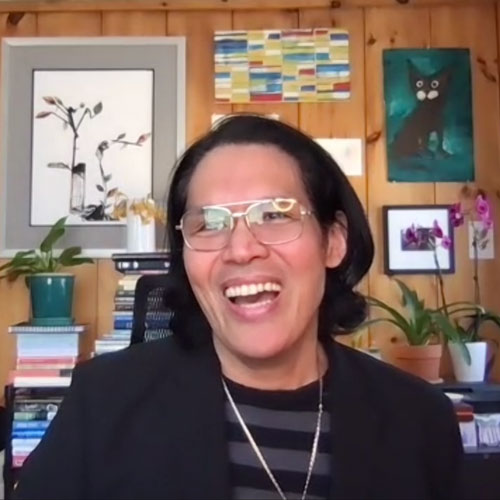
The day’s keynote speakers—Daniel Alexander Jones, professor of theatre and 2019 Guggenheim Foundation Fellow, and Tony Award winner Clint Ramos, head of design and production and assistant professor of design—shared personal reflections on how the year’s events have shaped their lives, particularly their performance and creativity.
For Jones, breathing has always been an essential part of his work after one of his earliest teachers “initiated me into the work of aligning my breath to the cyclone of emotions I felt within.” However, seeing another Black man killed recently, he said, left him unable to “take a deep breath this morning without feeling the knot in my stomach at the killing of Daunte Wright by a police officer in Minnesota.”
Jones said the work of theatre teachers and performers is affected by their lived experiences and it’s up to them to share genuine stories for their audience.
“Our concern, as theater educators, encompasses whether or not in our real-time lived experiences, we are able to enact our wholeness as human beings, whether or not we are able to breathe fully and freely as independent beings in community and as citizens in a broad and complex society,” he said.
Ramos said that he feels his ability to be fully free has been constrained by his own desire to be accepted and understood, and that’s in addition to feeling like an outsider since he immigrated here.
“I actually don’t know who I am if I don’t anchor my self-identity with being an outsider,” he said. “There isn’t a day where I am not hyper-conscious of my existence in a space that contains me. And what that container looks like. These thoughts preface every single process that informs my actions and my decisions in this country.”
Interdisciplinary Future
Both keynote speakers said that their work is often interdisciplinary, bringing other fields into theatre education. Jones said he brings history into his teaching when he makes his students study the origins of words and phrases, and that they incorporate biology when they talk about emotions and rushes of feelings, like adrenaline.
That message of interdisciplinary connections summed up the day, according to Jonathan Crystal, vice provost.
“Another important purpose was really to hear what one another is working on and what they’re doing research on,” he said. “And it’s really great to have a place to come listen to colleagues talk about their research and find out that there are these points of overlap, and hopefully, it will result in some interdisciplinary activity over the next year.”
Distinguished Research Award Recipients
Humanities
2020: Kathryn Reklis, Ph.D., associate professor of theology, whose work included a project sponsored by the Henry Luce Foundation on Shaker art, design, and religion.
2021: Yuko Miki, Ph.D., associate professor of history and associate director of Latin American and Latinx Studies (LALSI), whose work is on Black and indigenous people in Brazil and the wider Atlantic world in the 19th century.
Interdisciplinary Studies
2020: Yi Ding, Ph.D., professor of school psychology in the Graduate School of Education, who received a $1.2 million grant from the U.S. Department of Education for a training program for school psychologists and early childhood special education teachers.
2021: Sophie Mitra, Ph.D., professor of Economics and co-director of the Disability Studies Minor, whose recent work includes documenting and understanding economic insecurity and identifying policies that combat it.
Sciences and Mathematics
2020: Thaier Hayajneh, Ph.D., professor of computer and information sciences and founder director of Fordham Center of Cybersecurity, whose $3 million grant from the National Security Agency will allow Fordham to help Historically Black Colleges and Universities and Minority-Serving Institutions build their own cybersecurity programs.
2021: Joshua Schrier, Ph.D., Kim B. and Stephen E. Bepler Chair and professor of chemistry, who highlighted his $7.4 million project funded by the Defense Advanced Research Projects Agency on perovskites.
Social Sciences
2020: Iftekhar Hasan, Ph.D., university professor and E. Gerald Corrigan Chair in International Business and Finance, whose recent work has included the examination of the role of female leadership in mayoral positions and resilience of local societies to crises.
2021: David Budescu, Ph.D., Anne Anastasi Professor of Psychometrics and Quantitative Psychology, whose work has been on quantifying, judging, and communicating uncertainty.
Junior Faculty
2020: Asato Ikeda, Ph.D., associate professor of art history, who published The Politics of Painting, Facism, and Japanese Art During WWII.
2021: Santiago Mejia, Ph.D., assistant professor of law and ethics in the Gabelli School of Business, whose work focuses on shareholder primacy and Socratic ignorance and its implications to applied ethics.
But what happens when exclusion arises within those very groups?
A panel of Graduate School of Social Service professors grappled with that and other questions during a virtual event, Exclusion in Queer Spaces, that showed just how multilayered and complex it can be to create a more just and inclusive society.
Hosted by the Office of Alumni Relations, the Aug. 13 event grew out of concerns “that some members of the alumni community may have felt excluded from particular spaces, or alternatively, very included,” said Assistant Professor Sameena Azhar, Ph.D., one of five panelists who offered their views and took questions. Approximately 60 people attended, most of whom were alumni.
Layers of Exclusion
Panelists noted that exclusion can happen on many levels because queer people can have other intersecting identities—based on race, disability, or other traits and life experiences.
“Creating queer spaces [implies] this leaning towards inclusivity, but oftentimes people are still put in boxes within those boxes that they find themselves in,” said Assistant Professor Christopher Curtis, Ph.D. “And because things like privilege are so invisible, and we don’t see how we’re weaponizing that against people who check the same oppressed boxes we do, it is allowed to spread and grow and thrive.”
Another panelist, Associate Professor Laura Wernick, Ph.D., gave an example. One of her research projects, conducted at predominantly white universities in the Midwest, found that group activism helped white LGBTQ students cope with the depression brought on by discrimination.
The story was different, however, for LGBTQ students of color in these groups: Their depression grew worse. “Among students of color in these predominantly white organizations … the marginalization becomes strengthened,” Wernick said in a follow-up interview. Implicit and explicit racial bias exists within many LGBTQ organizations “culturally and politically grounded in [w]hiteness,” notes the 2016 study co-authored by Wernick and published in the Journal of Homosexuality.
The study raises interesting questions about what it means to be a queer organization and the conditions under which it becomes exclusionary, Wernick said.
One solution is having groups on campus for students with multiple identities. “Queer and trans folks of color don’t even have to be participating in it to benefit from it. Knowing it’s there is huge,” she said in the follow-up interview, noting the possibilities for collaboration among such groups on campus to foster greater understanding.
Wernick added that new faculty member Derek Tice-Brown, Ph.D., has taken the lead in forming affinity groups around race, and possibly gender and sexuality, at the Graduate School of Social Service for the coming year.
Queer Spaces and Social Constructs
The talk moved beyond groups and organizations to larger concepts of queer space. Panelist Tina Maschi, Ph.D., an associate professor, defined it as “not just a simple physical type of place, but this field of possibilities”—including genderqueer, gender fluid, and other identities—that allows for a certain amount of artistry.
“I consider myself all of the above plus more,” said Maschi, who uses the pronoun shea+ to indicate that identity. “All of these multiple realities coexist. And that’s queer space for me, and I’m happy to be sharing it with everybody.”
Maschi also noted another form of exclusion. In her own work with LGBTQ elders coming out of prison, shea+ said, “What concerned me the most was they were excluded from the dialogue about [queer] people.” There was also little research on it, which shea+ and her colleagues worked to rectify, Maschi said.
Wernick added that ableism, or discrimination in favor of the able-bodied, “is pervasive in more mainstream queer spaces,” just as it is in many spaces, although other queer communities have taken the lead in emphasizing accessibility, she said.
In fact, groups organized around ability and groups organized around gender and sexuality have common experiences, like “being seen socially or structurally as sick, or as needing to be fixed,” said Assistant Professor Kimberly Hudson, Ph.D.
An answer to that view is the social model of disability or ability, in which disability is viewed as a societal construct rather than a medical condition. This model can be applied to gender and sexuality as well, Hudson said.
“That really counters these deficit-based models of thinking about these experiences,” Hudson said. “It shifts the focus away from people’s bodies or people’s behaviors or identities and really focuses on systems and structures as being what is sick, and what is needing to be fixed.”
Azhar noted the perversity of a diagnosis being required before people can receive services related to gender identity.
“By giving this diagnosis, I can create a pathway for people to be able to access hormones or gender reassignment surgery or other kinds of benefits that they may otherwise not be able to receive,” she said. “It’s a real Catch-22 for clinical social workers, where you know that in order to give folks a pathway to access, you may be reifying a construct that you don’t believe in.”
Toward Greater Inclusion
In response to a question about how best to limit exclusionary behavior, Curtis replied, “Conversations like this. That’s how we start.”
“We have to keep this conversation open. We have to keep the conversation moving,” and accept that our own experiences and perceptions are not universal, he said.
“We don’t even see ourselves as being wrong or judgmental or discriminatory, because we assume that everybody functions the way that we do and thinks about things the way that we do,” he said. “So we have to be willing to unlearn many of the bad habits that we’ve picked up in personal and professional spaces.”
“There has to be a willingness to be uncomfortable,” he said. “We have to be ready to have those uncomfortable conversations and be wrong and not know and be confused. That’s how we learn.”
Read more about the panelists, their research, and their projects at Fordham and in the community.
]]> Media Ecology: An Approach to Understanding the Human Condition, by Lance Strate, Ph.D. (Peter Lang, 2017)
Media Ecology: An Approach to Understanding the Human Condition, by Lance Strate, Ph.D. (Peter Lang, 2017)
In his new book, Strate, professor of communication and media studies, examines how smartphones, apps, and social media shape us as human beings. He expands on an intellectual tradition, one spearheaded by Neil Postman and Marshall McLuhan (who taught at Fordham), that’s about much more than understanding any one particular medium.
“It starts with the understanding that those things we pay attention to, like screens, are not just gadgets,” he said. “We think we can turn them on or off, but when you look at them as part of our environment, we can’t escape them.”
Even people who don’t use social media will be inadvertently affected by it, said Strate, because its use is ubiquitous—much the same as persons who don’t fly and yet must content with planes continuously flying overhead. “We are living in an environment that is full of these mediations that influence us.”
“We all speak with a language we didn’t create. That influences how we express ourselves and in how we think,” he said.e
 Forensic Social Work: Psychosocial Legal Issues Across Diverse Populations and Settings, 2 ed., co-edited by Tina Maschi, Ph.D., and George Stuart Leibowitz, Ph.D. (Springer Publishing, 2018)
Forensic Social Work: Psychosocial Legal Issues Across Diverse Populations and Settings, 2 ed., co-edited by Tina Maschi, Ph.D., and George Stuart Leibowitz, Ph.D. (Springer Publishing, 2018)
“We’ve come a long way from forensic texts just being about expert testimony in court, but to include the systems of care,” said Tina Maschi, Ph.D. associate professor in the Graduate School of Social Service, the book’s co-editor. “Whatever angle or systems you are looking at, the problems still emerge.”
A collection of articles by leading academics and professionals, Forensic Social Work looks at the latest research and practices in the field. Readers learn to integrate socio-legal knowledge when working with diverse populations, and to become familiar with common forensic issues in the major settings of health care, social and protective services, the child welfare system, the criminal justice system, school systems, immigration services, and addiction treatment facilities, among others.
Among the topics discussed are the use of restorative justice around the globe; the application of “cultural humility,” in which social work practitioners are mindful to put aside biases when working with clients with cultural differences; and the importance of teaching ethics in forensic social work environments.
(Listen to Tina Maschi speak about the book.)
 Cognitive Development in Digital Contexts, co-edited by Fran C. Blumberg, Ph.D., and Patricia J. Brooks, Ph.D. (Elsevier Science & Technology Books, 2017)
Cognitive Development in Digital Contexts, co-edited by Fran C. Blumberg, Ph.D., and Patricia J. Brooks, Ph.D. (Elsevier Science & Technology Books, 2017)
Cognitive Development in Digital Contexts provides a survey of the impact of digital media on key aspects of children’s and adolescents’ cognitive development pertaining to attention, memory, language, and executive functioning.
The co-editors sought to present content pertinent to how children and adolescents evaluate the content presented to them via different types of screen media; what many scholars see as an aspect of media literacy, according to Blumberg. Both women had a goal to highlight how cognitive development was impacted by exposure and use of digital media.
“This focus has surprisingly remained largely neglected amid societal concerns about pathological media use and vulnerability to media effects such as demonstrations of physical aggression, cyberbullying, and Internet addiction,” said Blumberg, associate professor in the Division of Psychological and Educational Services at the Graduate School of Education.
The intended audience includes educators, researchers, policymakers, and media designers dedicated to examining and promoting children’s and adolescents’ cognitive growth in the digital era.
 Essays in International Money and Finance: Interest Rates, Exchange Rates, Prices and the Supply of Money Within and Across Countries, by James Lothian, Ph.D. (World Scientific Publishing, 2017)
Essays in International Money and Finance: Interest Rates, Exchange Rates, Prices and the Supply of Money Within and Across Countries, by James Lothian, Ph.D. (World Scientific Publishing, 2017)
A collection of papers by Lothian, Distinguished Professor of Finance and holder of the Toppeta Family Chair in Global Financial Markets, Essays in International Money and Finance focuses on the empirical performance of international monetary and financial theory. Within the broad scope of topics, one paper focuses on a study of exchange-rate behavior over the 200-year period from 1791 to 1990.
The featured papers were written over a 40-year period and have received the attention of other scholars, said Lothian, which is why he decided to assemble them together.
“The papers share a broadness in scope of another sort, with concerns for both history and in some instances, the history of economic thought and with emphases on both open-economy and closed-economy models of economic behavior,” he said.
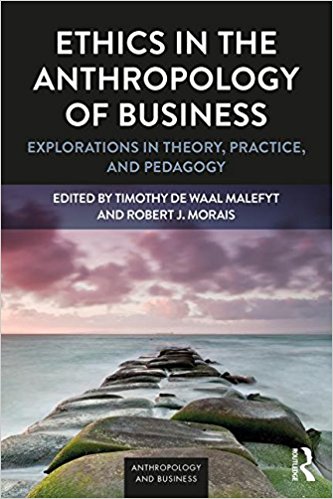 Ethics in Anthropology of Business, co-edited by Timothy de Waal Malefyt, Ph.D., and Robert J. Morais, Ph.D. (Routledge, 2017)
Ethics in Anthropology of Business, co-edited by Timothy de Waal Malefyt, Ph.D., and Robert J. Morais, Ph.D. (Routledge, 2017)
Malefyt, a clinical associate professor in the Gabelli School of Business, said that the anthropology of business is a relatively new field that takes a “cultural perspective of how people in groups may fit particular patterns.”
The timely collection of essays examines ethical challenges for anthropologists working in industries such as advertising, market research, and design. In a contributed chapter on advertising, Malefyt writes that ethics in that field can often prove complicated. He cites the popular Virginia Slims ads, which, in spite of being advertisements for cigarettes, had a positive effect on the feminist movement with their “You’ve come a long way” tag line.
“Anthropologists are good at studying cultural issues and how they impact business,” Malefyt said. “Adding ethics can be very valuable.”
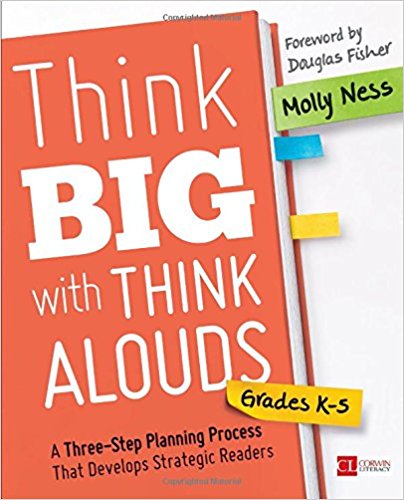 Think Big with Think Alouds, by Molly Ness, Ph.D., (Corwin, 2017)
Think Big with Think Alouds, by Molly Ness, Ph.D., (Corwin, 2017)
In her new book, Molly Ness, Ph.D., associate professor in the Graduate School of Education, helps elementary school teachers focus on five strategies to develop strategic reading habits and improve K-5 students’ comprehension. These include: (1) Asking questions; (2) making inferences; (3) synthesizing information; (4) understanding the author’s purpose; and (5) monitoring and clarifying. The book builds on Ness’s long-term research on reading comprehension instruction.
Specifically, she presents a three-step planning process to build teachers’ ability to “think-aloud”. In a think aloud, a proficient reader models the thinking process that s/he uses to understand a particular piece of text. The new book is based on a yearlong research study that Ness undertook with public school teachers who were simultaneously enrolled in GSE classes. Findings from the research study showed that, although think alouds are highly effective, they are not yet commonplace in classrooms today.
(Tom Stoelker and Veronika Kero contributed to this report.)
]]>
The field’s interplay with the law will be the focus of a daylong conference co-sponsored by the Graduate School of Social Service. “Forensic Social Work’s Role in Advancing Human Rights and Social Justice: A Local Global Celebration,” will take place on Thursday, Aug. 3, at the Lincoln Center campus.
“There are many definitions of forensic social work, but it’s often described as social workers working in legal settings or in justice centers, such as in the courts, in prisons, or in jails,” said Maschi. “It can also mean working with mental health clients or child adoption.”
Maschi said the conference is unique because it integrates human rights and social justice with forensic social work to bring about “a psycho-social intervention that makes a difference.”
“It’s about advancing a caring form of justice to challenge a system that uses punishment strategies that decimate indigent families and communities,” said Maschi. “Social workers can offer the antidote of caring justice that can help facilitate rehabilitation, healing, and reform.”
Maschi said that the current system has created a “separatist approach to solving problems,” when people should be working together. But, she added, the problems must be addressed—not just critiqued.
“It’s not enough to complain,” she said. “We have to create an alternative.”
Maschi said she hopes the conference will produce such alternatives: The “vision themed” talks in the main room of the Corrigan Conference Center will frame workshops, and panel discussions will seek to develop actions.
Joseph Wronka, Ph.D., professor of social work at Springfield College, will give the opening remarks on “Creating a Human Rights Culture.” John H. Calhoun, president of the National Crime Prevention Council, will close out the conference with a talk on “Lighting Paths to Safer Communities.” Mel Wilson, of the National Association of Social Workers’ (NASW) national office, and Juli Kempner, of NASW-NYC, the local chapter, will address national and local policy issues and their implications for social work practice.
Concurrently, workshops will tackle a variety of issues, including preparing young people to find humanity in one another, identifying and responding to labor trafficking, linking research with policy and advocacy, and educating undergraduates about mental health and addiction services.
Maschi said she expects that attendees will leave with tools that can help change the minds of those resistant to the mission of most social workers.
“We have all these laws on the books, but if you don’t have the spirit of tolerance in the general public then nothing we do as social workers will change the problem,” she said. “We need to create a pathway of understanding. And that’s done through training and advocacy found at events like this.”
“We have to create the world as we see it.”
]]>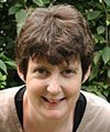
Tina Maschi, PhD, associate professor at the Graduate School of Social Service, studies both aging and criminal justice, and she found that a subsection of this graying prison population has long been overlooked: lesbian, gay, bisexual, and transgender elders.
To better understand the distinct experiences and needs of this population, Maschi conducted a qualitative study that allowed formerly incarcerated LGBT elders to tell their own stories. Through focus groups and one-on-one interviews with 10 volunteer participants, both male and female, Maschi gathered data from the narratives they told about their lives before, during, and after prison.
What she learned is that violence, often sexual violence, is a tragic fact of life for LGBT inmates, and that many times it is witnessed, overlooked, or perpetuated by both inmates and correctional officers.
“A lot of times, they couldn’t walk from place to place because of the fear of getting attacked, even going from their cell to an education class, or to go to the shower. So they are always on high alert,” Maschi said.
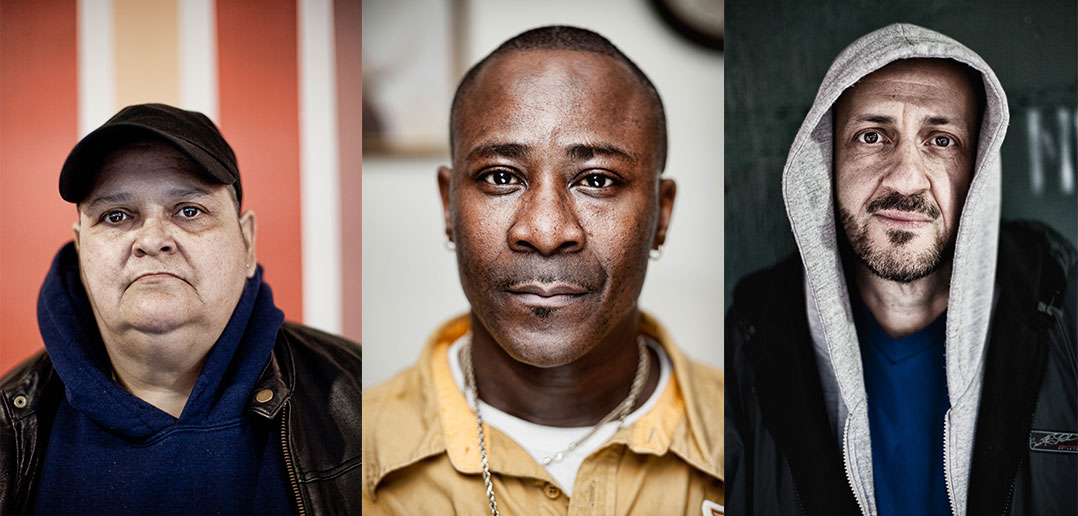
She also reported that sometimes LGBT inmates are put in solitary confinement, not due to their own behavior but for their own safety.
Troubles often continue for LGBT people returning to their communities after prison. Many face service providers who are not sensitive to their unique needs as well as difficulties finding housing where they feel safe revealing their sexual orientation.
Maschi found that a core theme of the participants’ stories was “self and the social mirror.” That is, the participants often managed multiple stigmatized identities, such as being LGBT, elderly, a racial or ethnic minority, being HIV positive, or having a mental illness or substance dependency.
At the same time, however, Maschi saw resilience in the participants that enabled them to continue a coming out process of “learning to accept themselves despite the fact that other people did not.”
“Despite everything that could knock them down, they stood tall and strong and sensitive,” she said.
For Maschi, factors that played a role in this self-acceptance were being accountable for the crimes they had committed, helping others, and finding social support.
Her study also drew upon the participants’ own recommendations for helping LGBT people in the criminal justice system. From these, Maschi concluded that a holistic approach was needed in providing vocational, educational, and clinical services to formerly incarcerated LGBT elders.
“We’re more than the sum of our parts,” she said.
Though an individual may be LGBT, elderly, a racial or ethnic minority, HIV positive, formerly incarcerated, “it’s just a piece of who they are,” she said.
“I think the common denominator is that we’re all human and we all deserve love.”
Maschi’s article on her study findings, “‘Coming Out’ of Prison: An Exploratory Study of LGBT Elders in the Criminal Justice System,” was published in May in the Journal of Homosexuality.
—Nina Heidig
]]>
Guns in America
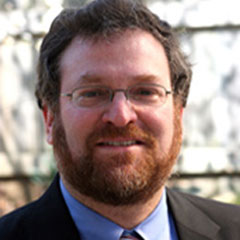
The shooting in San Bernardino will not change the larger dynamic at work in the contentious debate over the role of guns in American society. The gun rights position and the gun violence reduction policy agenda are each a product of a complex amalgam of interests and ideologies. Each must work in the increasingly dysfunctional world of American politics, a reality in which the wealthier, more entrenched interest tends to win: in this case guns. We are unlikely to see major changes at the national level and will continue to see the nation drift in opposite directions at the state level—“Red America” will likely continue to expand the right to carry in public and “Blue America” will pass some more regulations consistent with the way the courts have construed the meaning of the right to bear arms in recent years.
– Saul Cornell, PhD, Paul and Diane Gunther Chair in History and author, A Well-Regulated Militia: the Founding Fathers and the Origins of Gun Control in America.
Fantasy Sports Shutdown
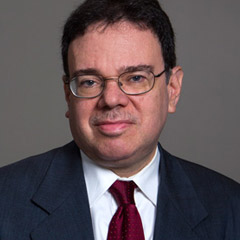
After a period of spectacular growth in an unregulated market, both FanDuel and DraftKings will have a rocky 2016. The New York State Office of the Attorney General will likely prevail in its quest to shut down these sites in New York (which had the largest number of players of any state), but only after months of litigation and appeals. However, it is likely these daily fantasy sports sites will continue to operate in other states, although in a more regulated fashion. The ultimate solution would be to legalize sports betting in some fashion, which would eliminate the need to debate whether daily fantasy sports constitutes gambling or not. I don’t see that happening next year, but [perhaps]in the next five years.
– Mark Conrad, Area Chair and Associate Professor of Law and Ethics, Gabelli School of Business and director of its sports business concentration
Prison Reform
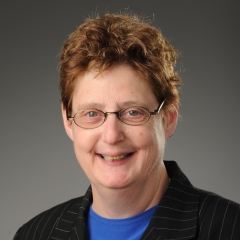
This coming year, New York State and the federal government will be challenged with following suit on their commitment to prison reform and improving community reintegration for incarcerated people of all ages. Ending solitary confinement, a form of inhumane punishment, will continue to gain state and national support. The shift from punishment to rehabilitation will open the door for trauma-informed care, [and]concerted efforts of local and national advocacy groups will increase public awareness of the consequences of mass incarceration, resulting in an increase of public support for humanistic prison reform and more community reintegration. In our own backyard, Fordham’s Be the Evidence project is collaborating with the New York State Department of Corrections to establish a statewide initiative for a discharge planning unit for the most vulnerable of prison populations—the aging and seriously ill. Perhaps most importantly, Sesame Street will continue to enlighten people about the experiences of young children who have an incarcerated parent. It may be the puppets (as opposed to the politicians) that will release us from the invisible prisons that separate each of us from one another’s common humanity.
– Tina Maschi, PhD, associate professor at the Graduate School of Social Service and president of Be the Evidence International
Escalating Humanitarian Crises
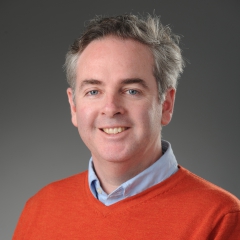
In 2005, Madame Sadako Ogata, then the United Nations High Commissioner for Refugees, said of the Balkan crisis, “There are no humanitarian solutions to humanitarian problems,” stating that only political action can bring about real change. That statement is still true 10 years later. In 2016, due to political inaction, the current Middle East migration crises will worsen, and increased human displacement and suffering will continue. Perhaps, even worse, the humanitarian community will continue to lack critical and needed financial support and qualified personnel. Other countries in the region, especially Jordan, Palestine, and Lebanon, will therefore see an increase in unrest, adding to the overall migration numbers.
– Brendan Cahill, executive director of Fordham’s Institute of International Humanitarian Affairs
Reproductive Ethics
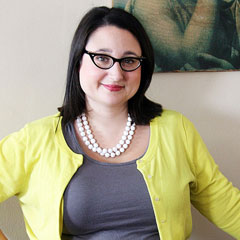
Uterus transplant clinical trials are currently—and will continue to be—a major news story in 2016. At this stage, a study in Sweden involving nine women who received uteruses from living donors resulted in five pregnancies and four live births in 2015. Two other clinical trials are set to begin next year: one in the United Kingdom, and one at the Cleveland Clinic in the United States. A significant ethical issue with the Swedish trial was the fact that the living donors had to undergo major surgery with potential complications for something that had no direct physical benefit for them. But the new trials will differ from the one that took place in Sweden, because each uterus will come from a deceased donor, eliminating potential harm to a living donor. However, many questions remain unanswered, including whether uteruses transplanted from deceased donors will result in pregnancies, and whether women will view posthumous [womb]donation differently than donating other organs currently used in transplants, such as kidneys and hearts, because of its unique role as the organ responsible for gestation.
– Elizabeth Yuko, PhD, bioethicist at Fordham’s Center for Ethics Education
Rate Increase Ripple Effects
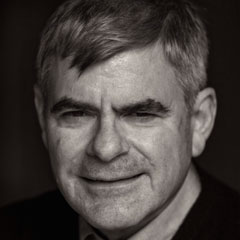
When the Fed set its monetary policy in December 2015, they were making policy [strictly]on the basis of the U.S. economy, but at the same time it affects the entire world. The new interest rate hike clearly appreciates the dollar, and the real question for the emerging market countries is, if something looks risky to an investor in another country, why keep your money there when you can get guaranteed dollar-denominated deposits? Even at .25 percent, when multiplied by hundreds of billions of dollars, that is real money. So investment is flowing back to the United States. Given that people will be less willing to invest in emerging markets—China, Brazil, Argentina, and the Middle East—their currencies will depreciate. If there are slowdowns in some of these nations, their domestic debt crises could compound quickly.
– Paul McNelis, SJ, Robert Bendheim Professor of Economic & Financial Policy, Finance and Business Economics, Gabelli School of Business
Climate Change and the Marginalized
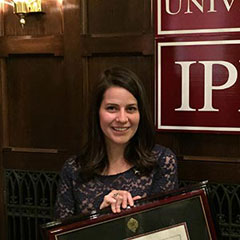
The coming year looks hopeful for the environment. The agreement reached at COP21 finally replaces the question of climate change with a dialogue about combatting it. While international agreements do not solve local problems, they can create a more supportive climate for local communities trying to address them. In Paris, I saw attention shifting to the role of indigenous peoples and a renewed appreciation for the traditional knowledge of local communities. These inevitably slow-but-vital shifts in global perspective bring to light the marginalized person whom development efforts should ultimately target. These people offer us ideas on how to achieve economic growth without harming the environment. Scaling their daily work to reach the goals set by world leaders is key to sustainable development.
– Elizabeth Shaw, graduate student in Fordham’s International Political Economy and Development program, and attendee at the 2015 United Nations Climate Change Conference (COP21)
2016 Presidential Election
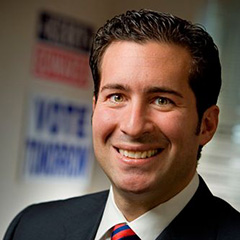
Elections are ultimately determined, in part, by which voters show up. The 2016 election’s likely turnout of 60 percent, while lower than many would like, will exceed the turnout in 2014 by about 20 percentage points. Higher turnout generally favors Democrats, because many voters who abstain in midterms and other low-salience elections are young or new voters and minorities. Still, many things are up in the air: For example, if Donald Trump fails to get the GOP nomination, do his supporters sit out the election or does he mount a third-party candidacy that appeals to them? Turnout—along with outcomes generally—is also driven by fundamentals like perceptions of economic performance and the incumbent party. Seeking your party’s third term in the White House seems to carry a general-election penalty of 4 or 5 percentage points, so the Democratic nominee will have to work hard to mitigate that effect.
— Costas Panagopoulos, PhD, professor of political science and director of Fordham’s Elections and Campaign Management program
ISIS
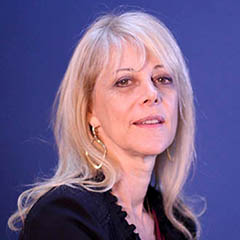
ISIS has defined itself as “ISIS against the world.” That offers the US and other nations a unifying focal point. I think the strategy we have now will continue to grow, which is to engage with more Muslim heads of state and leaders from various countries to mount a united front. It’ll be interesting to see how Iran fits into that conversation and what happens with the U.S./Saudi alliance, but I don’t think it will change U.S./Russian relations very much. Domestically, ISIS has provided a unifying focal point as well. It’s been very reassuring to see strong pushback against Trump’s anti-Muslim comments. Individuals from across the political spectrum have declared that his proposal to ban Muslims from entering the country violates the most fundamental constitutional guarantees.
– Karen Greenberg, PhD, is the director of the Center on National Security
]]>
Social workers often find themselves on front lines of where the hard numbers of economics meet people’s complex social and emotional needs. Yet, many students venturing into the field of social services often eschew the literature of other disciplines, like economics, that directly affect their clients. Now, a new journal supported by the Graduate School of Social Service (GSS), titled 21st Century Social Justice, seeks to merge social work research with that of neuroscience, economics, and law.
“During my research into social work, I have found it impossible not to wander into the literature of other fields,” said Zachary Alti, GSS ’14, the founder and editor of the inaugural issue.
“But neuroscience can seem intimidatingly scientific, and the cold realism of economics can be perceived as antagonistic to social justice.”
Alti approached Tina Maschi, Ph.D., an associate professor at GSS, with his concerns that there was a knowledge gap in social work research that needed to be filled. With the support of Fordham University Libraries, Maschi helped facilitate the message and the mechanics, while Alti recruited fellow students.
He issued a call for papers and wrote the opening statement. An editorial board of fellow students was formed so that papers could be peer reviewed. Maschi said that developing a student-led journal was already a goal at the school, but it was Alti’s initiative that brought together a “convergence of ideas.”
“This is a beyond the classroom learning experience,” she said. “Students need to realize their own knowledge and their power, and know that they have something to offer the other sciences. They’re the scholars. They have a valid, expert role in sharing their views with these other fields.”
Getting the various disciplines to join a scholarly endeavor led by social workers can to be a challenge, she said. But she added that social workers play a vital role in translating the science and economics to communities that are directly affected.
“Social work is a psycho-social-spiritual medicine,” she said. “It’s important to recognize that social work plays a primary role in preventing illness and promoting health and well being. The journal is just another step towards social workers being accepted as full and equal partners in knowledge generation.”
The inaugural issue highlights several topics, including little known social problems related to families caring for a fragile infant, breastfeeding women in the workplace, conditional cash transfers among women in Columbia, and the effect of climate change on vulnerable populations.
“Psychologists are often perceived as the industry standard for therapy,” said Alti. “I wanted to strengthen the view of social work as different from psychology, in that it has a distinct framework. We’re a much more externally oriented field, always looking at the environmental factors at play. We want the journal strengthening that distinction with knowledge from other fields.”
With Alti recently graduated and in private practice, student Merritt Juliano will take up the role of editor. Juliano is accepting papers for the next issue at [email protected]. All disciplines are welcome to submit.

Photo by Ken Levinson
For 10 years, Tina Maschi, Ph.D., documented the ways in which trauma led to delinquency among the youths and adults she worked with in the juvenile and criminal justice systems.
“From the time I walked into the correctional settings, I said there’s something wrong with this picture,” said Maschi, an associate professor in the Graduate School of Social Service (GSS).
She could help the incarcerated men, women, and youngsters she met by offering them therapy during their prison stays and preparing them when it came to time to reenter society. But she was only one person with limited resources. It would require more extensive, communal efforts to halt the cycle of traumatized youth moving in and out the prison system.
Maschi’s frustration became the seeds for the Be The Evidence Project (BTEP), a wide-ranging effort to spread awareness of critical social issues of the day. Run under the GSS, the project functions as a channel to provide information on issues of human rights and social justice with the aim of enlisting help from the community at large.
“It dawned on me that large-scale societal change is a long haul, and it takes a lot of organization and collective grassroots activism,” said Maschi, who is the executive director of BTEP. “But one thing that we have control over is how we think. Each one of us can change our outlook on current social issues.”
An allusion to Gandhi’s call to be the change you wish to see in the world, BTEP began in 2010 with awareness-raising events on topics such as trauma among incarcerated individuals. In October of 2011, the project launched its first major event with the Aging Prisoner Forum. The event drew more than 150 attendees, and resulted in a white paper penned by national experts who provided the latest research on prisoners growing old and dying in prison.
Since then, BTEP has hosted an array of projects, from the rights of the lesbian, gay, bisexual, and transgender (LGBT) community to the use of the arts to promote well-being and to fuel social change. The group hosts town hall meetings, public forums and conferences—all of which are free and open to the public—and sponsors research on the issues raised. The events are collaborative, involving affected populations, clinicians, researchers, policymakers, and more.
“Some institutes are founded on one particular issue, but we try to be flexible with the projects,” Maschi said. “A broader umbrella allows us to adopt current human rights and social justice issues as they arise.”
Raising public awareness is at the heart of BTEP’s mission. According to Maschi, the idea is to shed light on social issues in order to help individuals and communities develop a critical consciousness about the issues and respond to them knowledgably.
To accomplish this goal, BTEP affiliates—Maschi and a rotating group of graduate and undergraduate students, interns, and community partners—also use the project to disseminate the latest in scholarly research.
“Academic articles can take two years to be published,” she said. “A system of rapid dissemination to the public is important because if research is only in academic journals, only certain people have access to it.
Information sharing is also critical for those working in the field, said Linda Hood, GRE ’07, a doctoral student at GSS who works with BTEP, because 21st-century social work is facing a number of new challenges. Dwindling funds have forced many cash-strapped agencies to rethink the way they run their organizations.
“Agencies have had to take on the business model to survive,” Hood said. “It’s now about efficiency—doing the job for the least amount possible, just like a business. In many ways, that hurts access to and quality of services.”
Advocacy has suffered as a result, Hood said. In some cases, organizations’ public awareness campaigns have been used to fundraise, rather than as a tool to educate persons about the needs of a population. Such campaigns sometimes breed misinformation that ultimately confuses and even harms clients.
That is why, Hood said, BTEP is critically important for the social work field and its beneficiaries, as well as for the community at large.
“It’s about coming up with creative solutions, new ways to solve old problems,” she said. “And Tina is a creative risk-taker.”
In just three years, BTEP has garnered national attention from agencies, universities, and other organizations seeking to employ BTEP’s method of advocacy, research, and education, Maschi said. And since the project is not tied to a particular grant (it is funded through a number of channels, including the John A. Hartford Foundation, the Gerontological Society of America, the National Endowment for the Arts, the Community Trust Fund, and Fordham’s Office of Research), there is no end in sight.
Maschi said that in the future, BTEP will continue to sponsor events and research on a variety of issues in order to increase public awareness about social justice, as well as to “be the evidence” for the next generation of social workers.
“We’re making a unique contribution toward an understanding of societal issues, and we’re advancing our set of practices,” she said.
“Because if we don’t change the collective thinking about issues, if we don’t have a spirit of tolerance in society, then we can have all the laws on the books you want but nothing will change.”
In addition to the campus events slated for this academic year, BTEP will host the National Organization of Forensic Social Work at Fordham in July 2014.
“We’ll be advocating for a new era of forensic practice that calls for cultural justice and ends disparities,” she said.
For more information about BTEP visit http://www.fordham.edu/btep.
]]>But because half of those living with HIV in the United States will be over the age of 50 by 2015, the country is now entering unchartered territory: How can we assist a growing elderly population with HIV?
Fordham’s Be the Evidence Project (BTEP), of the Graduate School of Social Service, will host a daylong conference bringing together researchers, practitioners, and advocates to shed light on this unprecedented challenge.

“Aging Well with HIV: Challenges and Opportunities”
Monday, March 25
9 a.m.
12th-floor Lounge/Corrigan Conference Center
Lincoln Center Campus
“Aging well with HIV is an innovation,” said Tina Maschi, Ph.D., founder and executive director of BTEP. “With new anti-virals, people can live into older age with this chronic illness. So the healthcare field is grappling with how we manage a population that used to be dying off at earlier ages.”
Besides dealing with the typical trials that come with aging, older adults who are HIV positive often grapple with depression and substance abuse as well, which are further exacerbated by the stigma of the disease, ageism, racism, poverty, and social isolation.
“[It’s important to] assess for these comorbid issues,” Maschi said. “It’s not just treating the physical body and physical symptoms that promote longevity—it’s also about the social-emotional-spiritual component that makes a difference in longevity.”
Students and participants will have the opportunity to meet local leaders in the field, including speakers Richard Havlik, M.D., former chief of epidemiology at the National Institutes on Aging, and Perry Halkitis, Ph.D., associate dean for research and doctoral studies at the New York University Steinhardt School.
In addition, the conference will debunk the myth that only young people contract the virus—a dangerous misconception that keeps older individuals from being tested and treated.
“People are living longer in general, and are contracting the virus later in life,” Maschi said. “This is all uncharted territory. There is so much more to learn.”
The event is co-sponsored by the AIDS Community Research Initiative of America and Fordham’s Center for Ethics Education.
For more information, contact the Be the Evidence Project.
]]> Mahatma Ghandi famously said ‘Be the change you want to see in the world.”
Mahatma Ghandi famously said ‘Be the change you want to see in the world.”
Eleanor Roosevelt, in her speech to the United Nations Commission on Human Rights, said “Where do human rights begin? In small places, close to home . . . the world of the individual person; the neighborhood he lives in; the school or college he attends; the factory, farm or office where he works.””
Tina Maschi, Ph.D., assistant professor of social work in the Graduate School of Social Service, is taking those concepts and applying them to a new lecture series at the Lincoln Center campus. Maschi, through her position as a 2010 Hartford Foundation scholar, has launched the Be The Evidence project at Fordham—a series of lectures and workshops designed to improve individual and community responses to today’s most critical social issues.
The first event on Feb. 8 features Thomas Larson, LSCW, a clinical social worker and federal probation officer, speaking on how to work with “involuntary” clients (i.e. persons who are forced into therapy, such as prisoners or juvenile offenders.) Several other events will follow over the course of the year.
Maschi said she was inspired to do the series by current debates in social work and other social service professions on how human rights and social justice can be realized. Whether in social work, medicine or psychology, whether a counselor, a scientist or a reformer, Maschi suggests we all ask ourselves whether we, ourselves, are “evidence” that the changes we’ve wanted to see have come about.
“We as humans tend to externalize problems as if they are outside of ourselves,” said Maschi. “In order to change these external problems or social ills, the change must start from within– if I want to combat oppression, have I carefully examined myself to eradicate any ways in which my actions oppress others?”
The inaugural lecture will be Feb. 8 at 7:30 in Room 713 of the Lowenstein Center on the Lincoln Center campus. The next event, on torture in U.S. prisons, will be March 17.
—Janet Sassi
]]> For a couple of years now, Tina Maschi, Ph.D., assistant professor of social work in the Graduate School of Social Service (GSS), has been interviewing older adults incarcerated in the New Jersey Department of Corrections’ criminal justice system to study the link between trauma, delinquency and its effect on one’s life course.
For a couple of years now, Tina Maschi, Ph.D., assistant professor of social work in the Graduate School of Social Service (GSS), has been interviewing older adults incarcerated in the New Jersey Department of Corrections’ criminal justice system to study the link between trauma, delinquency and its effect on one’s life course.
“There is a dearth of information about the impact of trauma on older adults in the criminal justice system and older adult offenders in general,” said Maschi, whose project was partly funded by a GSS and Fordham Faculty research grant. “If prison is bad, it’s especially bad for older offenders.”
Maschi’s work has paid off: she has been named one of six Hartford Geriatric Social Work Faculty Scholars in the nation by the John A. Hartford Foundation and the Gerontological Society of America. The honor carries with it a $100,000 research support grant over two years to further her study.
The Hartford Faculty Scholars Program is designed to address the lack of adequately trained social workers to meet the needs of the burgeoning aging population. In addition to continuing her research, Maschi will be paired with a social work research mentor, and will participate in development institutes and workshops.
“It’s quite an honor and I’m pleased to accept it,” said Maschi. “It will help build on the researching those offenders who really have it bad, many of whom have been institutionalized most of their lives.”
Maschi’s research was profiled in INSIDE FORDHAM in 2008.
J.S.
]]>